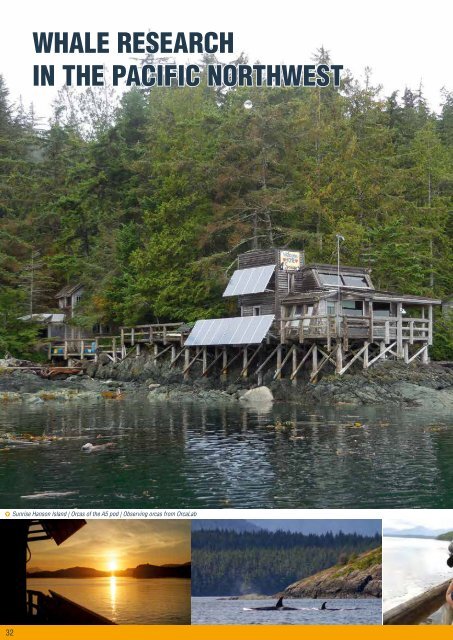Responsible Whale Watching
1gkqDcLwd
1gkqDcLwd
You also want an ePaper? Increase the reach of your titles
YUMPU automatically turns print PDFs into web optimized ePapers that Google loves.
WHALE RESEARCH<br />
IN THE PACIFIC NORTHWEST<br />
WHALE RESEARCH IN THE PACIFIC NORTHWEST<br />
At OrcaLab on Hanson Island (British Columbia, Canada), Paul Spong and Helena<br />
Symonds have been researching the acoustics of the Northern Resident orca<br />
population since the 1970s. They set up a hydrophone network and record and<br />
analyze the dialects of the different family groups. The Orca Live Community<br />
offers people around the world the opportunity to listen to the hydrophones and<br />
also watch live footage from a camera network also featured on Explore.org.<br />
Cetacea Lab, situated further north on Gil Island, established a humpback<br />
whale photo ID catalogue and also records every orca sighting in the area. Both<br />
research projects are land-based and also study the impacts of human influence<br />
on the whales.<br />
The Center for <strong>Whale</strong> Research has been monitoring the Southern Resident orca<br />
community for 40 years and is responsible for maintaining the official census of<br />
the population. It is located on San Juan Island.<br />
WDC has been supporting OrcaLab for many years with the Adopt an Orca<br />
Programme. Adopters get to know individual orcas from the Northern Resident<br />
population and help WDC and OrcaLab to protect these magnificent marine<br />
mammals.<br />
© Ulla Christina Ludewig<br />
e Sunrise Hanson Island | Orcas of the A5 pod | Observing orcas from OrcaLab<br />
32 33


